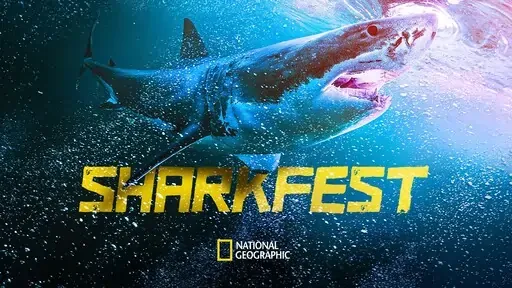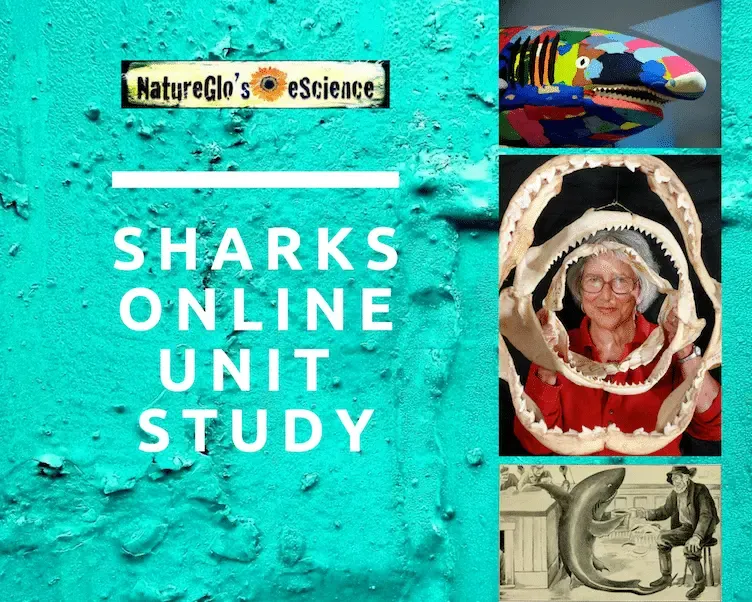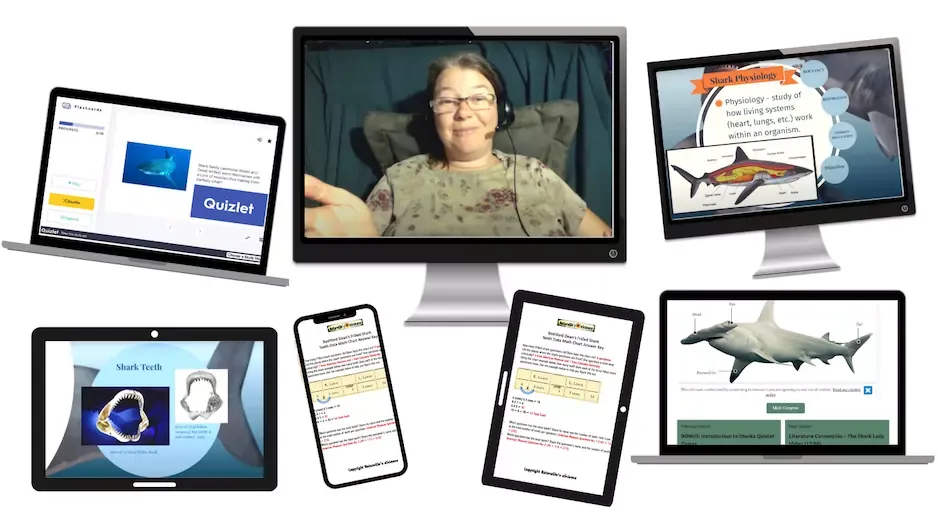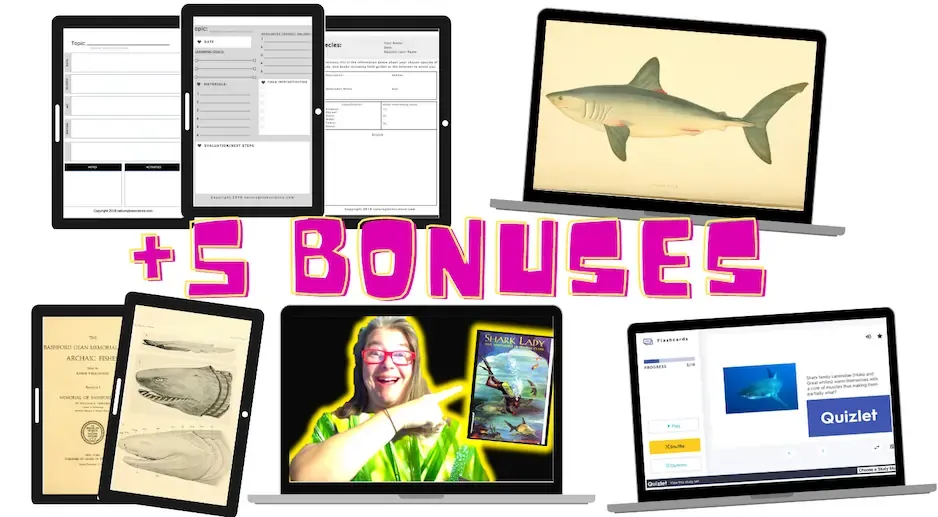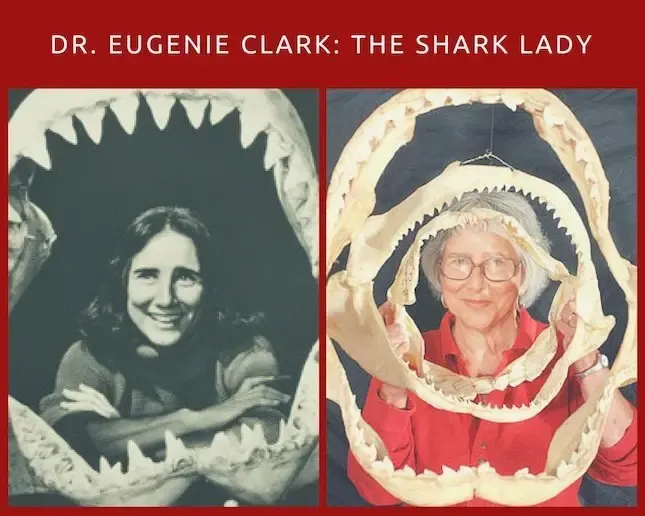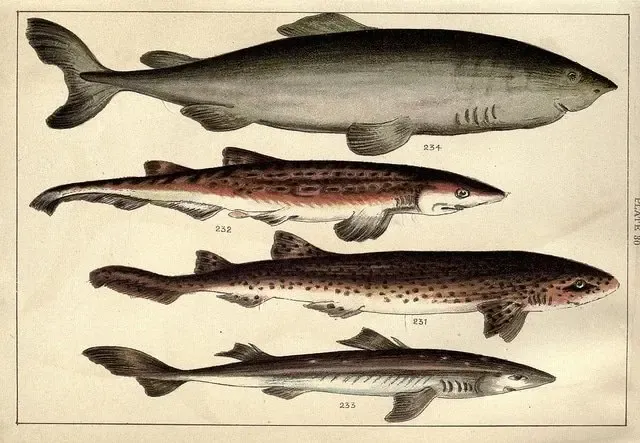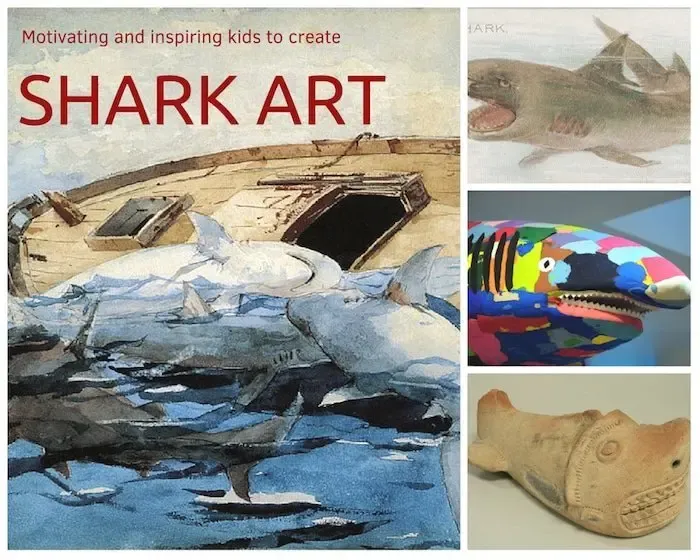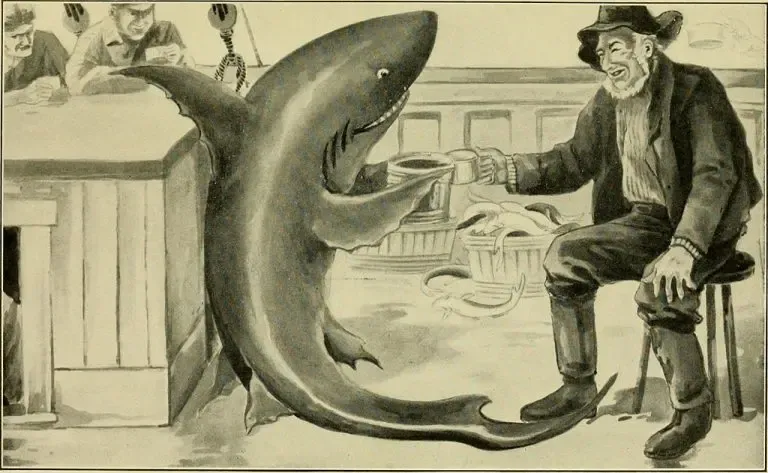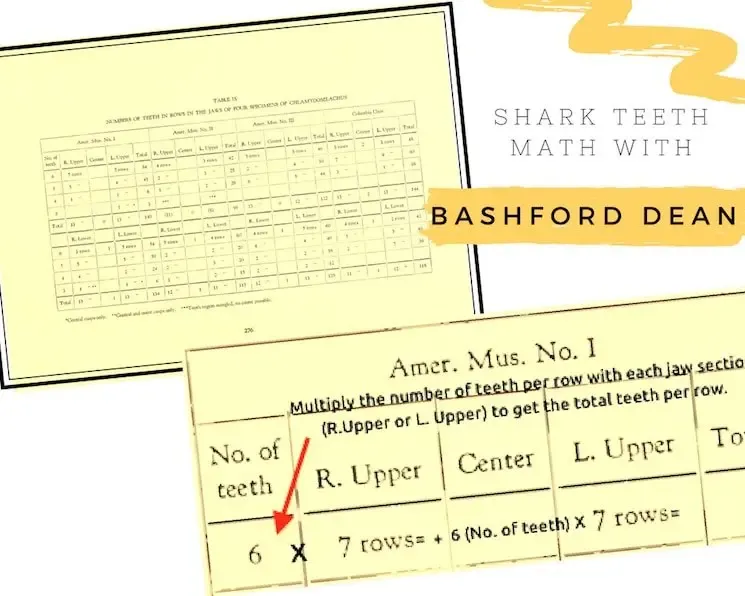How to Do a Shark Unit Study
Interested in doing a shark unit study for your homeschool or classroom? Are your kiddos into Shark Week and the National Geographic equivalent called Sharkfest?
This article will help equip both homeschool and school educators for getting the most out of an easy to implement shark unit study either from scratch using this simple free unit study planner, and, or, by using NatureGlo's eScience Sharks Online Unit Study.
Many homeschoolers are familiar with Discovery Channel's Shark Week which occurs every July or August. A quick Google search will yield the correct month and dates for the year's Shark Week.
Shark week does an extremely thorough job covering interesting facts on sharks. In fact, the program goes above and beyond with all the latest research and best cinematography to bring these amazing sea creatures life-like into your living room!
Did you know that Shark Week has been airing every July since 1988?
Let's dive into this topic and how you can use NatureGlo's Sharks Online Unit Study in your homeschool marine life unit today!
You can create your own fast and easy to implement shark unit study using my free unit study planner below.
National Geographic Sharkfest
Since May 1, 2014, National Geographic has run a 26-day series called Sharkfest from the end of June to the end of July. The show reveals the latest science and technology showing the beauty and wonder of various shark species globally.
Want help preparing your next Shark week and Sharkfest shark unit study?

Get NatureGlo's FREE Unit Study Planner Template with Marine Fish Unit Study Plan Below.
Why Study Interesting Facts on Sharks?
Sharks and humans have a long standing love-hate fascination relationship. Since ancient times, sharks have been depicted in art, story-telling, poetry, songs, books, movies (*coughs, the movie, Jaws) interwoven throughout human history.
A shark unit affords the homeschool or school shark enthusiasts a banquet of learning opportunities that can make even the most dry-as-dust-boring subject come to life for your child, such as creative writing. I have something for non-writers too that should inspire them to WANT to write!
What are Sharks?
Sharks, are from a group of vertebrates (animals with backbones) known as the "cartilaginous fish". They are from order, Chondrichthyes, which is divided up into two groups called subclasses. They are further divided up into two groups called Elasmobranchii (sharks, rays, sawfish, and skates) and the Holocephali or chimaera or ghost sharks.
Here's a nifty looking poster showing you all of the 8 major existing shark orders.
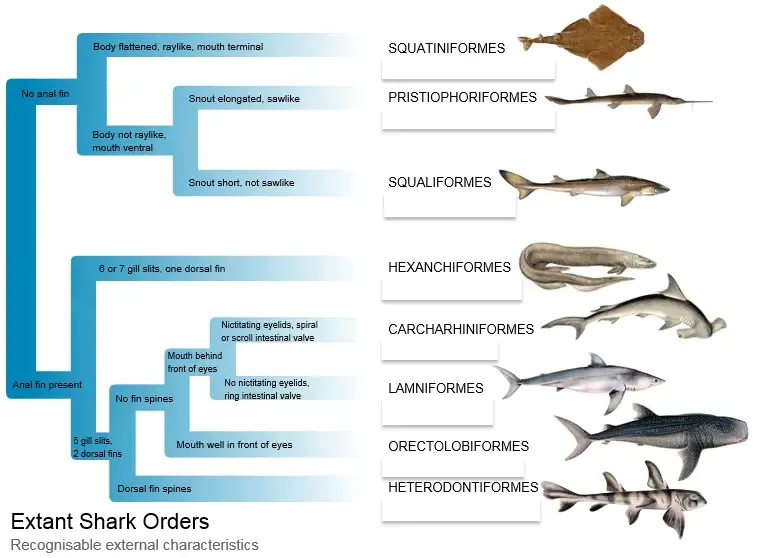
Image credit: Chris Huh
Shark Characteristics
- Skeletons made of cartilage - Granules of calcium carbonate on the outside of the cartilage add strength. The mosaic granule pattern is unique.
- Jaws
- Paired fins
- Paired nostrils
- Lack a swim bladder found in most bony fishes
There are some remarkable shark species varieties that hardly look like sharks. Take, for example, the Tasselled wobbegong in the video below.
Do you think that the Tasselled Wobbegong looks like a shark?
How to Use NatureGlo's Sharks Online Unit Study
NatureGlo's (that's me) Shark Online Unit Study is an opportunity for you to incorporate some exciting marine biology or oceans unit studies in your homeschool while covering other academics.
NatureGlo's eScience Sharks Online Unit Study (Ages 8+) covers Interesting Facts On Sharks in the following subjects:
- Science connection - DK Find Out shark body map interactive. Video: Shark Deterrent: Stripes Tested by Cousteau and Dr. Eugenie Clark Video
- Literature connection - The Story of Eugenie Clark, famed marine biologist and ichythologist (study of fish)
- History connection - Study the works of famed turn of the 19th century zoologist Bashford Dean. Bashford's books about fish, specifically sharks, were THE most well-written and most accurate for its time. We study his work as an important historical figure and body of knowledge in human understanding of shark biology at that time. We look at remarkable historical writings compiled from Dean's notes after his death. We use an embeded digital book about called Archaic fish and learn about the Frilled shark. It's amazing to these historical writings and read about Frilled sharks.
- Art connection - Look through shark paintings through the ages since ancient times. Create chalk shark art.
- Geography connection - study a world map and click through different locations around the world to learn about shark species in that geographic range.
- Writing connection - students can create interesting scientific stories about sharks with two fun writing prompts. They can also create shark poetry from a list of poetry types with examples.
- Math connection - Students study the numbers of Frilled shark teeth from four shark specimens using Bashford Dean's actual 1920's Frilled shark teeth data chart.
HOMESCHOOL PARENTS:
Get the Sharks Online Unit Study Now!
PLUS, you get these 5 FREE bonuses
when you order today!
If you choose to enroll in the Sharks Online Unit Study course, the rest of this article offers lesson enhancing information and how to best go through the course.
- Start with the first lesson, NatureGlo's Prezi presentation video.
- Do the Prezi Quizlet
- Go through the rest of the course's lessons either in order or in any order you and your learner want.
Sharks Science Connection - Shark Body Map Interactive and Jacques Cousteau and Eugenie Clark Shark Test
Shark behavior testing led to innovative wetsuit design
Images credit: Left image: Jacques Cousteau. Right image: SAMS
After students view the Prezi presentation about sharks, they go through the DK Find Out shark body map interactive. These fun DK interactives give students the opportunity to learn fascinating facts in a fun and visual way.
Next, in the science study, students view a short 3-minute video called, Shark Deterrent: Stripes Tested by Cousteau and Dr. Eugenie Clark. You get to watch as Eugenie Clark and the Cousteau crew work with ferocious sharks to see if they can tempt them out of their "fear" of horizontal stripes. Further investigation into this phenomena of the sharks fear, yields knowledge that they are afraid of horizontal strips for good reason!
Homeschool Sharks Literature Connection - The Story of Dr. Eugenie Clark (1922 - 2015)
Images above: Dr. Eugenie Clark 1922 - 2015 - famous for her pioneering work in shark behavior.
Studying the life of famed ichthyologist(study of fish), Dr. Eugenie Clark, is an enriching learning experience for children. Eugenie was born in New York city.
As a young girl, Eugenie became fascinated by marine life after visiting New York City's Battery Park Aquarium. Undeterred, by the attitude and idea at the time that women should only be home raising families, Eugenie graduated with her degrees until she earned her doctorate. She wrote two books, Lady with a Spear (1953) and The Lady and the Sharks (1969).
Sharks History Connection - Bashford Dean (1867 - 1928) and his historical contribution to the study of marine fish
Dr. Bashford Dean (1867 - 1928)
Study the works of famed turn of the 19th century zoologist, Bashford Dean. We look at his remarkable work using a digital book entitled Archaic Fish, memorializing Dr. Dean's writings about fish. Students do some light reading from the chapter about the Frilled shark. It's amazing to see these historical biological writings and read about Frilled sharks.
Sharks Art Connection - Shark Art Through the Ages & Shark Chalk Art
During the shark art connections lesson, students look through shark paintings through the ages since ancient times. They can create simple, fun and creative chalk shark art.
In the art activity, students can create unique, yet, simple chalk artwork. Using easy to follow steps from a teacher-artist's blog, students can come up with beautiful works of shark chalk art.
Sharks Geography Connection - Building Familiarity with the World Map and Specific Geographic Ranges of Student Favorite Sharks
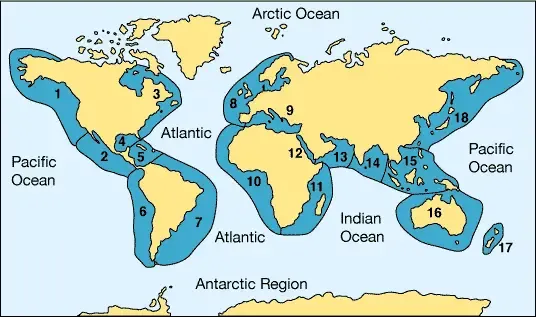
Shark world map. Map image credit: Shark.ch
Students study a world map and click through different locations around the world to learn about shark species within that geographic range. Incorporating geography connections with a favorite subject such as sharks can boost student geography skills as they click around an interactive map looking at various shark species. This familiarizes them (if they aren't already) with the world map and shark species around the world. I ask them questions that get them researching their favorite shark(s) and their geographic range(s). Students record three facts about their chosen shark within the comments section found beneath the lesson.
Shark Writing Connection - Creative Fiction or Non-fiction Stories About Student Favorite Sharks
Image From the book, Fish Stories Alleged and experienced
with a little history natural and unnatural (1909).
Students can create interesting scientific or not so scientific stories about sharks. I give two fun one-paragraph writing prompts to get their creative writing juices flowing. Students can also create shark poetry from a list of poetry types with examples.
Writing about a favorite topic such as sharks can help motivate your learner to really get into their writing. It opens the door for in-depth research, creativity, writing practice, and honing the ever-important skill of writing.
Shark Math Connection - Studying and Answering Mathematical Questions about Bashford Dean's Frilled Shark Teeth Data Table
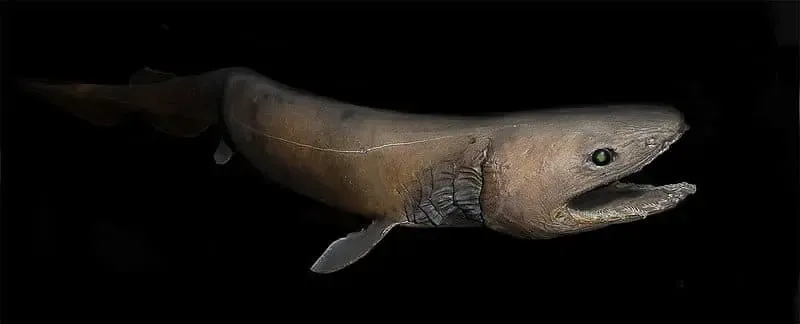
The deep sea Frilled shark. Image credit: Citron / CC-BY-SA-3.0
Frilled Shark Teeth Math with Bashford Dean
Students study the numbers of Frilled shark teeth from four shark specimens using an actual 1920's Frilled shark teeth data chart. Students use basic math (addition, subtraction, and multiplication). Younger and older students can appreciate the challenge it poses since they'll be using a real data cart from the early 1900's, thus fostering a unique historical and mathematical connection.
I hope to see you on the inside of NatureGlo's Sharks Online Unit Study.
Enroll now in NatureGlo's Sharks Online Unit Study!
Conclusion
Whether you're a homeschool parent with a shark obsessed child, or, a classroom teacher looking to spice up your science curriculum, a shark unit can go a long way to inspire youth to learn about these incredible animals.
Educators can start a shark unit study first with books from the library to see what shark topics interest their learners. Next, get NatureGlo's Sharks Online Unit Study as a DFY solution.
Follow that up with enhancing their learning experience with resources about their favorite shark topics.
Favorite learner topic enhancing resources can include shark books, shark toys, shark art, and going to see sharks at an aquarium. You can go all out with your shark learning experience by boldly going to swim with sharks at an establishment for such in Florida or beyond.
Talk Soon,
Gloria aka NatureGlo
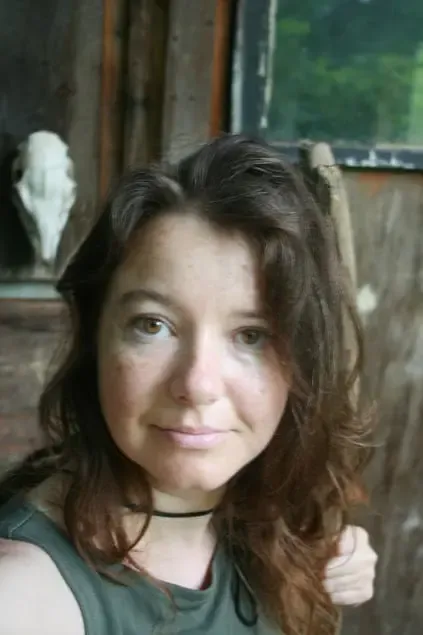
Together, Let's Regain Stewardship of the Earth Through Educating Today's Youth For Tomorrow's Restored Planet!


